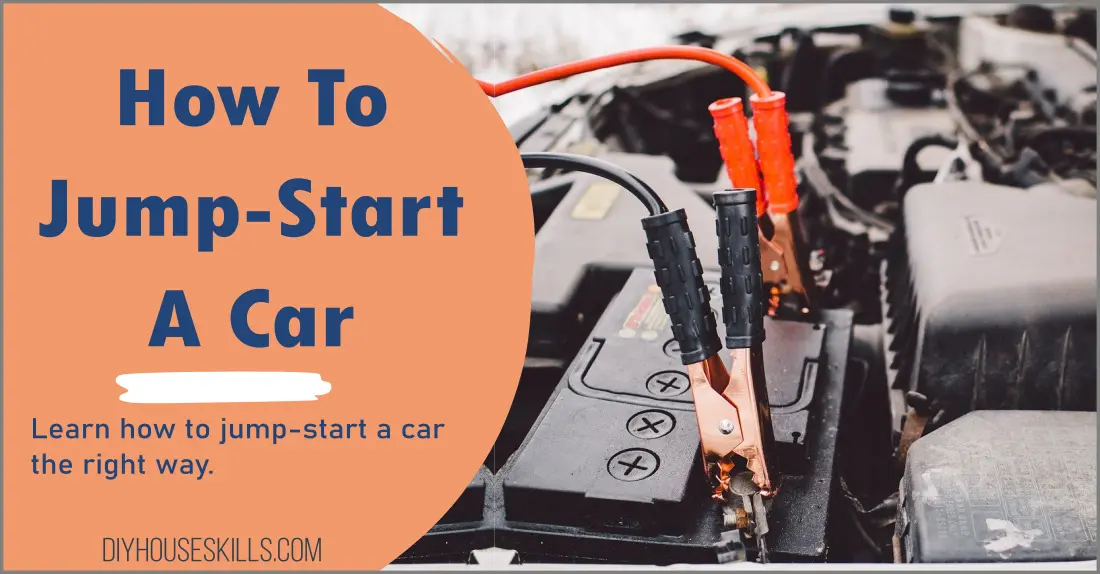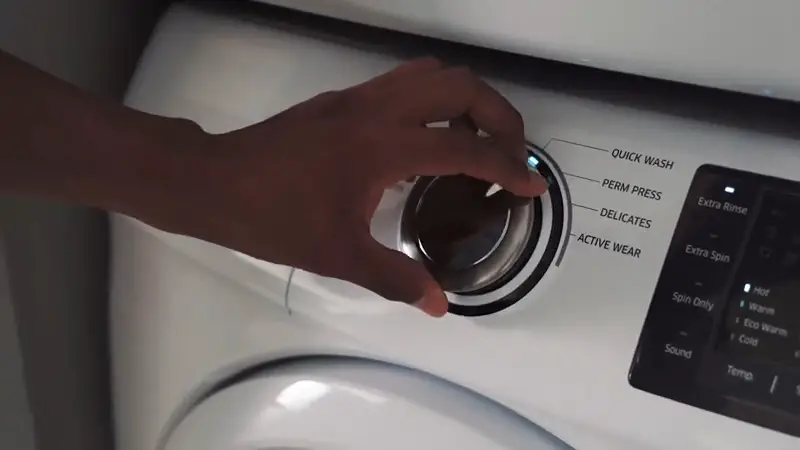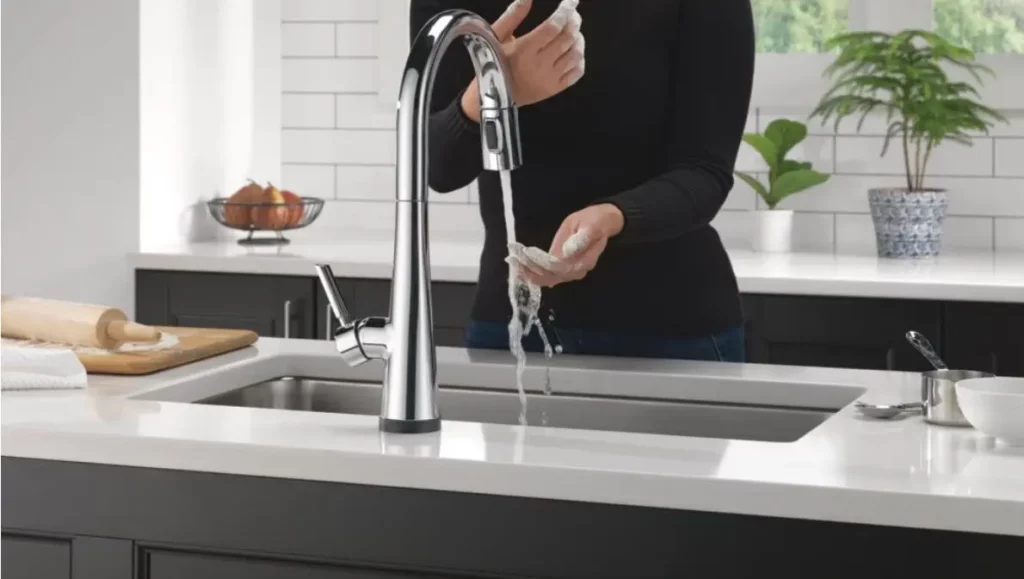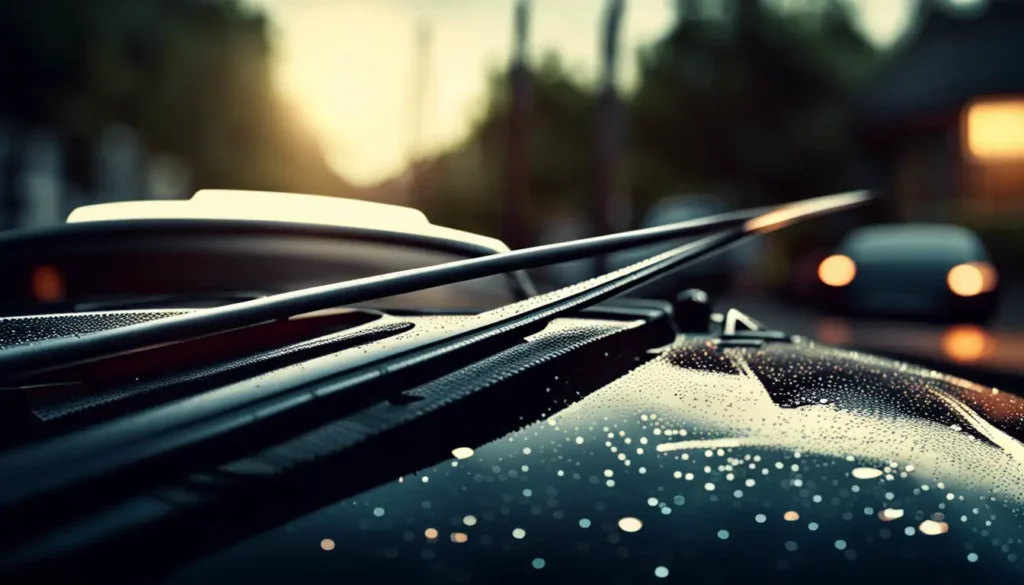- Learn how to jump-start a car the right way – boosting a dead battery in just a few simple steps.
- This guide will show you how to get your car started using the correct cables and techniques.
- See even more How-To and Maintenance guides.
- Important Jumpstarting Safety Tips
- How To Safely Jump-Start A Car
- What You Need In Order To Jump-Start A Car
- Safety Tips for Jump-Starting a Vehicle in an Unknown Environment
- How Long Do Car Batteries Last?
- How To Safely Jump-Start A Car With A Battery Charger
- How To Tell If The Battery Is Fully Charged
- What To Do After You Jump-Start The Car
- How To Prevent Your Battery From Dying In The First Place
- Jumping a Hybrid Car or Electric Vehicle
Important Jumpstarting Safety Tips
- Jump-starting a car is easy, but you should do it with caution. Since the car battery is located in the engine compartment, where flammable gases may be present, a spark could set off a fire.
- So while you’re hooking up the weak battery to the live battery in the booster car, you’ll want to do it without creating any sparks.
- Always check your vehicle’s owner’s manual for the proper jump-starting procedure.
How To Safely Jump-Start A Car
A dead car battery can be a real pain, leaving you stranded and unable to get to where you need to go. But if you carry jumper cables or a jump box in your trunk, and know how to use them properly, you can jump-start your car and be on your way. Jump-starting a car is easy, but you need to be careful not to create any sparks, as the battery is located in the engine compartment where flammable gases may be present.
First of all, make sure you have the necessary materials and equipment on hand. You will need a set of jumper cables (also known as booster cables) and another car or a truck with a good battery.
Once your own car is running again remember not to shut it off right away – leave it running idle for at least 10 minutes before finally shutting down all engines involving this process.
To jump-start your car:
1. Position the Booster Vehicle
To safely jump-start a car, you’ll need to position the booster vehicle as close to the battery as possible.
- Park the booster car next to the dead car, and make sure both cars are turned off.
- Open the hood of both cars.
2. Locate Battery Terminals
You’ll need to know where the battery is located in both cars before you can jump-start them. In most cars, the battery is located under the hood in the engine compartment.
- Once you’ve found the battery, look for the positive and negative terminals. The positive terminal will usually be marked with a “+” sign, while the negative terminal will usually be marked with a “-” sign.
Tip: The red and black battery cables are usually connected to the positive and negative battery terminals accordingly, but do not rely on this to determine which battery terminal is which. The cables could easily be switched which would result in a dangerous situation.
3. The Order In Which You Should Connect The Jumper Cables
- Connect one end of the red jumper cable to the positive terminal of the dead battery.
- Connect the other end of the red jumper cable to the positive terminal of the live battery in the booster car.
- Connect one end of the black jumper cable to the negative terminal of the live battery in the booster car.
- Finally, connect the other end of the black jumper cable to a metal part of the dead car that is not near the battery (to avoid sparks).
Tip: Make sure the cables do not touch each other or touch any metal surface on either car, as this could create a spark.
Why Don’t You Connect The Negative When Jumping A Car?
The negative terminal is connected to the ground, so if you connect it to another car’s negative terminal, you could create a spark. This spark could cause an explosion if there are any flammable fumes present in the engine compartment.
4. Jump-Start The Car
Start the booster car, wait about 2-3 minutes and then try to start the dead car. If it starts, let it run for a few minutes. Go ahead and disconnect the jumper cables.
If your car won’t start after trying this method, then you may need a new battery – which you can get from an auto parts store.
5. Disconnect Jumper Cables
Disconnect the jumper cables in the reverse order that you connected them:
- Disconnect the black cable from the metal part of the car.
- Disconnect the black cable from the negative terminal of the live battery in the booster car.
- Disconnect the red cable from the positive terminal of the live battery in the booster car.
- Disconnect the red cable from the positive terminal of the dead battery.
Now that you know how to jump-start a car, you’ll be prepared next time your battery dies. Just remember to exercise caution and follow the steps in order to avoid creating any sparks.
ALSO READ: Changing A Tire – What To Know (Easy Tips)
What You Need In Order To Jump-Start A Car
The tools you need in order to jump-start a car are:
- A good set of thick Jumper cables.
- Another car with a working battery.
Tip: If there is a good bit of corrosion built-up on the post terminals, you may want to use a wire brush to clean them off first. This will help to ensure a good connection.
Safety Tips for Jump-Starting a Vehicle in an Unknown Environment
When attempting to jump-start a vehicle in an unfamiliar environment, safety should be your top priority.
- Be sure to wear gloves, protective goggles, and any other protective gear necessary to protect yourself from potential hazards of the environment.
- If you are able to do so safely, inspect the cables for any visible signs of damage before attempting to use them.
- Additionally, it is best practice to locate the positive (red) and negative (black) posts of each battery before making any connections.
- Make sure your vehicle is parked in an open space with enough room to maneuver around while jump-starting and ensure no combustible materials such as gasoline or oil that may catch fire if exposed to sparks are nearby.
- Keep all bystanders away from the area while jump-starting and properly disconnect cables after the process is finished by starting with the negative then the positive post on both batteries. Doing this will reduce the risk of accidental damage or injury when working in an unfamiliar environment.
How Long Do Car Batteries Last?
Car batteries last anywhere from 3-5 years on average. However, this can vary depending on a number of factors such as:
- How often do you drive your car?
- How well do you maintain your battery?
- The type of battery you have.
- The climate you live in.
How To Safely Jump-Start A Car With A Battery Charger
A battery charger is different than a portable jump starter in that it will slowly charge a dead battery over time. This is the preferred method if you have the time to wait for the battery to charge.
To use a battery charger, you connect it to the dead battery and then let it charge for a few hours. Once the battery is charged, you can start the car.
Tip: The main benefit of using a charger is that there is no risk of sparks or fire since the charging process is much slower than jump-starting.
On the other hand, a portable jump starter is designed to provide a quick burst of power to the dead battery in order to start the car.
How To Tell If The Battery Is Fully Charged
To tell if a battery is fully charged, you should first confirm that the charge level is at 100%.
If a battery does not show this indication, then it may be necessary to use a multimeter to measure the voltage of the battery.
The voltage should typically range between 12.6V and 13.2V for a 12V lead-acid battery.
Other types of batteries should have their respective fully charged voltage information displayed on them or in their manual.
Once you’ve confirmed the voltage of the battery with a multimeter, you can still carry out additional diagnostic tests to ensure accuracy.
This includes testing specific gravity in flooded lead-acid batteries or checking the state of health (SOH) values in AGM batteries.
By carrying out these tests, it is possible to get an accurate picture of how full your battery is and how well it has been maintained over its lifespan.
Aside from these diagnostic tests, there are also some other signs to look out for in terms of telling if your battery is at its full charge level.
First off, your car should start up quickly and easily when using fully charged batteries; if it takes several tries or feels like there’s not enough power available during ignition then something could be wrong with your current setup.
Additionally, make sure that no visible corrosion has built up around either positive or negative terminals as this can hinder energy transfer throughout the system and reduce the overall charging rate significantly resulting in weak power output no matter what age batter might be.
What To Do After You Jump-Start The Car
After jump-starting a car, it is essential to follow a few simple steps to ensure that the car remains operational and safe. Here are some proactive measures you should take after you successfully jumpstart your vehicle:
- Check for signs of damage – Before leaving the scene, make sure that there are no loose connections or frayed wires in the engine. If you’re unsure about what to look for, have a mechanic inspect your engine for any potential issues that could have been caused by improperly jumping the car. Additionally, check to make sure all doors are shut and lights are turned off as these can cause a further drain on the battery if left open/on upon start-up.
- Rev up the engine – Start the revving process of your engine by giving it some gas and allowing it to idle for 15 minutes or so before turning it off completely. This allows time for your battery’s chemical structure to reform, which recharges its cells enough to provide the necessary voltage back into electrical systems once again.
- Monitor temperature levels – Keep an eye on temperature levels when initializing ignition via the temperature gauge display present within the dashboard.
- Charge up your battery – Be sure to charge your battery with a charger designed specifically designed for such purpose after jump starting the car and provide necessary maintenance throughout its lifespan so the new one doesn’t need to be installed soon again afterward either.
Tip: Consider driving to an auto parts store that can test your battery for you and give you an idea of how well it’s holding a charge.
How To Prevent Your Battery From Dying In The First Place
There are a few things you can do to help prevent your battery from dying in the first place:
- Check the battery regularly.
- Keep the terminals clean.
- Drive the car regularly.
- Turn off all lights and accessories when the car is not running.
Signs your battery is dying are the engine is slow to turn over or cranks before finally starting, and there’s a dimming of the headlights.
Jumping a Hybrid Car or Electric Vehicle
Jump-starting a hybrid or electric car is different than jump-starting a regular car.
It is best to follow the procedure from your vehicle owner’s manual for the specifics of jump-starting procedures.
Most electric and hybrid cars have high-voltage batteries that require special care when jumping the car.

I’m J.S., I created and am the content manager at DIYHouseSkills.com. I do the research and write the articles that appear on this website. I’ve learned many household skills during my life and think it’s important to at least know the basics so that you can save yourself time and money… READ FULL BIO >
- What Does “SE” Mean on My Samsung Washer?Seeing the dreaded “SE” error code on your Samsung washer can be frustrating, but don’t panic. This guide will help you understand what it means, diagnose the cause, and walk you through potential solutions to get your laundry cycle back on track. Understanding the “SE” Error First things first, what exactly does “SE” mean on a … Read more
- How to Disable the Touch Feature on a Delta FaucetSometimes the convenience of a touch-activated faucet isn’t so convenient – like when you’re cleaning, have messy hands, or maybe the feature is just behaving a bit erratically. If you need to temporarily or permanently disable your Delta touch faucet this article tells you how. The process is quick and painless. Steps to Turn Off Touch … Read more
- Grout Replacement 101: When DIY is the Right Choice (and When it’s Not):Cracked, crumbling, or discolored grout – the bane of any tiled surface’s existence. It not only detracts from aesthetics but can harbor mold and mildew, posing potential health risks. But fear not, homeowners! Grout replacement is an achievable project, and this guide will equip you to decide whether DIY is the right choice for you. Is … Read more
- Choosing the Best Sealants for Your ProjectsToday, I’ll share my insights and guide you through selecting the best sealants for every project around your home—from the kitchen and bathroom to windows and exterior spaces. By the end of this guide, you’ll be equipped with professional knowledge to make informed decisions and wield sealants like a pro. Kitchens: Food-Safe Silicone Sealant When it … Read more
- How To Change Windshield WipersChanging your windshield wipers is like giving your car fresh eyes—a clear view makes all the difference on the road. I’m about to guide you through an easy, DIY wiper blade replacement that will ensure your windshield stays streak-free, rain or shine. Essential Tools and Parts for Wiper Replacement Before we embark on our blade quest, … Read more






